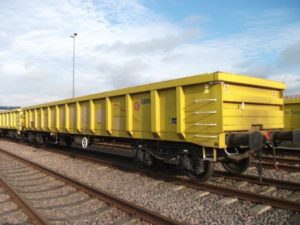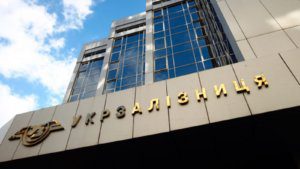
Polish companies, with the assistance of the Polish Power Transmission and Distribution Association, handed over 20 wagons with electrical equipment to Ukrainian power engineers, the Ministry of Energy of Ukraine reported on its website on Thursday.
“Electrical equipment, power transmission towers, transformers, generators, power cables transferred by Polish companies with the assistance of the Polish Electricity Transmission and Distribution Association were transferred to seven regions of Ukraine,” the ministry said in the report.
According to the ministry, the first two batches of aid from Polish companies have already been distributed and transferred to distribution system operators in Kyiv, Odesa, Zaporizhia, Luhansk, Chernihiv, Mykolaiv, and Sumy regions. The third batch is awaiting distribution and transfer to the regions.
“We are very grateful to our Polish colleagues for their help in restoring the power infrastructure destroyed due to Russia’s military aggression against Ukraine. The equipment received, first of all, will be aimed at restoring power grids and power facilities, which were most damaged due to hostilities,” Energy Minister Herman Haluschenko said.
As the Ministry of Energy said, in total, assistance from Polish companies amounted to more than 12,500 units of equipment, including line fittings, power transformers, backup power generators, more than 400 reinforced concrete poles for power transmission lines, as well as more than 65 km and 7.3 tonnes of power cable and wires.

British-based Ferrexpo plc, which in Ukraine controls, in particular, Poltava and Yeristovo mining and processing plants (PGOK and YeGOK), continues to increase its fleet of wagons, having received 50 new high-sided cars from Kriukov Car Building Works (KCBW, Poltava region) from the ordered 400.
“Good news … We’ve received the first 50 new wagons from KCBW out of 400 ordered. Thus, there will be 3,050 high-sided wagons operating in Ferrotrans subsidiary. The planned increase in the fleet of our own wagons is necessary to implement Ferrexpo’s strategic plan to double the production of pellets within five years,” Vitaliy Oliynyk, the logistics manager at Ferrotrans, part of Ferrexpo Group, said on Facebook.
However, he noted that now an increase in the fleet of wagons will not lead to an increase in the shipment of products, “since the monopoly carrier does not have the technical ability to deliver goods to their destination.”
“Without attracting private capital to purchase locomotives and using them on trunk routes, we can’t even dream of increasing exports … We expect decisive actions from the new government, and we’ll get to work together,” the manager stated.
He regretted the loss of control over Stakhanov Car Building Plant, which was part of Finance and Credit financial and industrial group controlled by Ukrainian businessman Kostiantyn Zhevaho.
“If it wasn’t for war, then Ferrexpo would have been provided with absolutely any quantity of quality high-sided cars and dump cars produced by PJSC Stakhanov Car Building Plant,” Serhiy Zelensky, the plant’s ex-manager for sales and marketing, noted.

The European Bank for Reconstruction and Development (EBRD) could sign one more agreement with public joint-stock company Ukrzaliznytsia in 2018 to provide funds to buy wagons. An Interfax-Ukraine correspondent has reported that Deputy Director of the EBRD for Ukraine Marina Petrov gave the information at the Ukrainian Infrastructure Forum 2018 in Kyiv.
“We hope that in the near term we will sign one more deal on the purchase of wagons,” she said, not specifying the details of the future agreement.
Petrov also said that the annual total volume of lending in the infrastructure area of Ukraine by the EBRD is up to EUR 300 million.
“We expect that EUR 150-300 million, which we usually make in the transport sector a year, we would make this year,” Petrov said.
As reported, Ukrzaliznytsia seeks to buy around 9,000 new wagons in 2018, including 5,180 from third parties. 3,400 out of 5,180 wagons to be bought from third parties some will be bought using the planned loan of the EBRD.